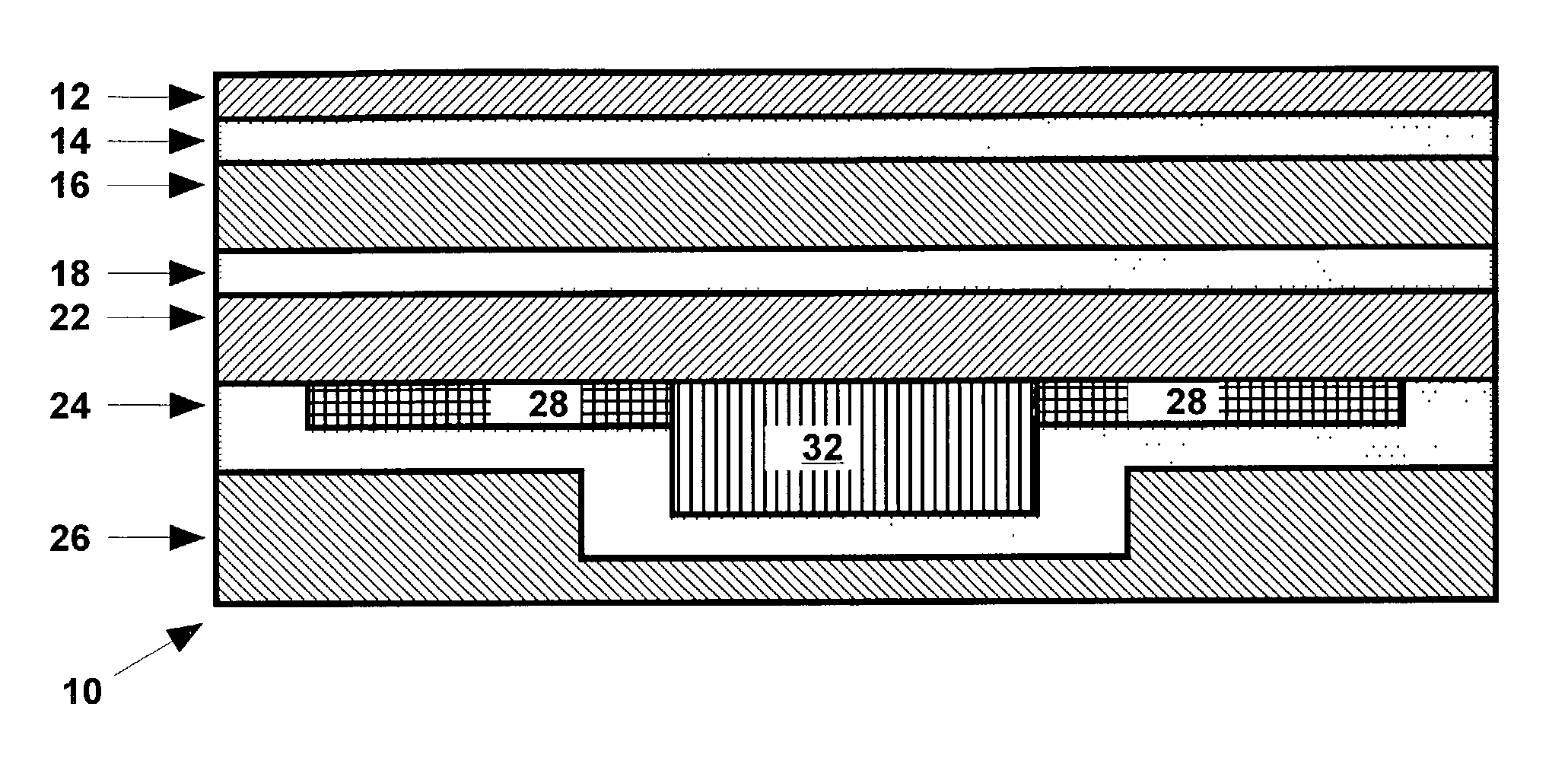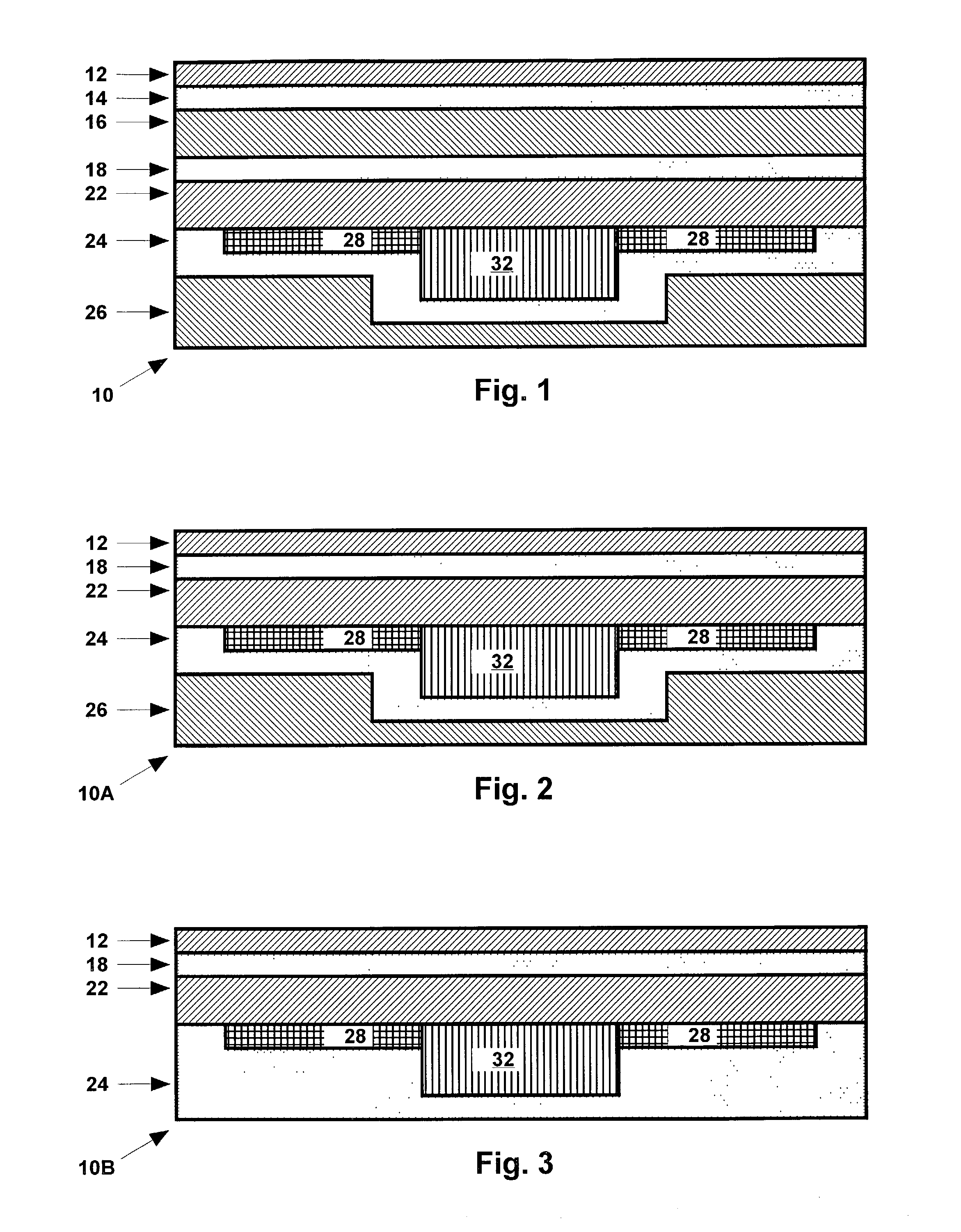In-mold radio frequency identification device label
a radio frequency identification and label technology, applied in the field of labels, can solve the problems of poor solution of simple adhesion of radio frequency identification device labels to these items, and achieve the effect of improving bonding and structural integrity
- Summary
- Abstract
- Description
- Claims
- Application Information
AI Technical Summary
Benefits of technology
Problems solved by technology
Method used
Image
Examples
example 1
[0039]A label 10 as shown in FIG. 1 was prepared as follows. The label 10 was made by: (1) solvent coating, at about 2 to 6# / ream, two 0.0070″ thick polyolefin films (Teslin® brand porous silica filled polyethylene available from PPG Industries) with a thermoplastic heat activated adhesive polyester resin (MorEster® 49000 brand polyester resin available from Rohm and Haas); (2) heat laminating a flexible radio frequency identification device to the polyolefin layers at 275° F. at a speed that is slow enough to soften the polyolefin so it can form around the irregular profile of the integrated circuit chip and antenna of the radio frequency identification device; and (3) heat laminating a 0.001″ polyester film with a polyethylene heat laminating adhesive to the flat side (non-chip side) of the polyolefin-radio frequency identification device laminate. The end product can be supplied in either continuous rolls, scored or perforated rolls, or individual cut tags.
[0040]Fifty labels were...
example 2
[0041]A label 10A as shown in FIG. 2 was prepared as follows. The label 10A was made by: (1) solvent coating, at about 2 to 6# / ream, a 0.002″ thick white pigmented polyester film (e.g., Mylar® brand pigmented polyester film available from DuPont) and a 0.0070″ thick polyolefin film (Teslin® brand porous silica filled polyethylene available from PPG Industries) with a thermoplastic heat activated adhesive polyester resin (Mor-Ester® 49000 brand polyester resin available from Rohm and Haas); (2) heat laminating the chip side of a radio frequency identification device to the polyolefin layer at 275° F. at a speed that is slow enough to soften the polyolefin so it can form around the irregular profile of the integrated circuit chip and antenna of the radio frequency identification device; and (3) heat laminating the polyester film to the flat side (non-chip side) of the polyolefin-radio frequency identification device laminate. The end product can be supplied in either continuous rolls,...
PUM
| Property | Measurement | Unit |
|---|---|---|
| thickness | aaaaa | aaaaa |
| thickness | aaaaa | aaaaa |
| thickness | aaaaa | aaaaa |
Abstract
Description
Claims
Application Information
 Login to View More
Login to View More - R&D
- Intellectual Property
- Life Sciences
- Materials
- Tech Scout
- Unparalleled Data Quality
- Higher Quality Content
- 60% Fewer Hallucinations
Browse by: Latest US Patents, China's latest patents, Technical Efficacy Thesaurus, Application Domain, Technology Topic, Popular Technical Reports.
© 2025 PatSnap. All rights reserved.Legal|Privacy policy|Modern Slavery Act Transparency Statement|Sitemap|About US| Contact US: help@patsnap.com


